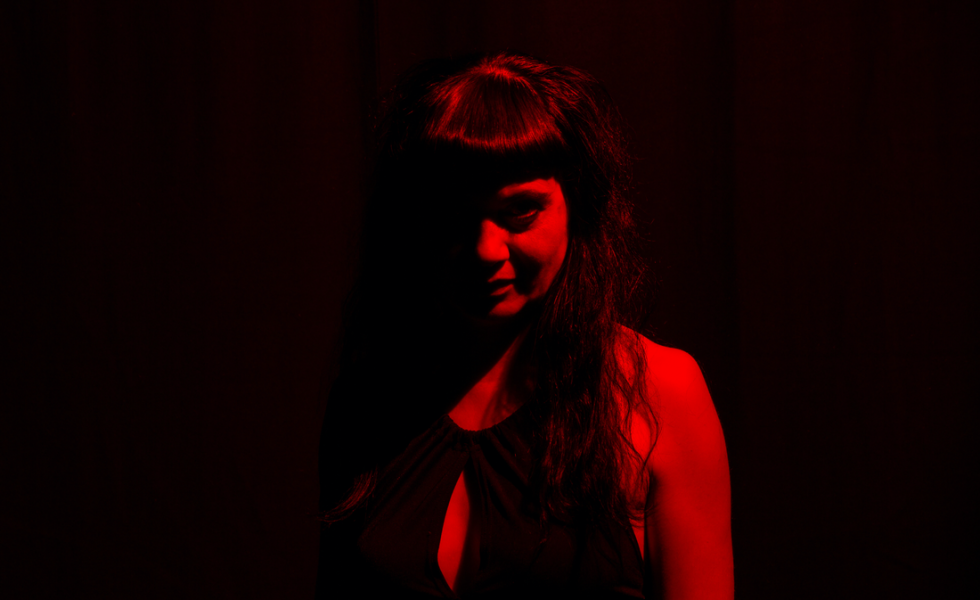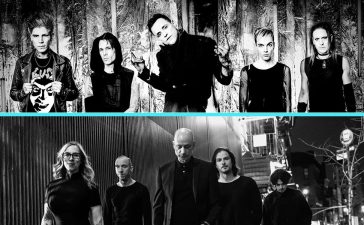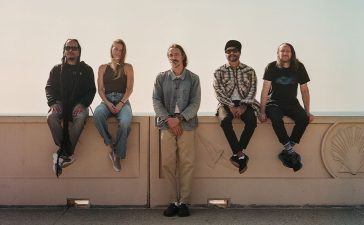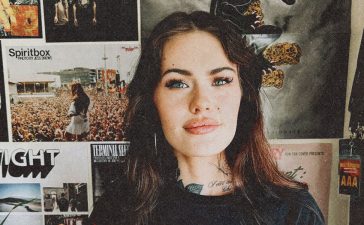The power of an instrument with the history of the Melbourne Town Hall Grand Organ has to be respected. In commissioning Naretha Williams to play it, the City of Melbourne chose to empower an artist that wouldn’t insult that history with pretentiousness. Instead, Williams would infuse the work that she would go on to create with the truth of her identity, being a First Nations woman with a lineage affected by the European invasion. We spoke to Naretha about her first album, BLAK MASS, composed around the organ.
How would you describe this project? BLAK MASS would hit metal fans where they’re sentimental, but it’s not metal per se.
I guess the main proposition was the instrument itself, the organ. And having not worked with the organ before, I really looked at the instrument itself and kind of wanted to present it in all its glory. But not how it would traditionally be used. So I guess I sort of approached the organ as a character within itself. Which obviously raised a lot of ideas around its nature and its kind of context in the church and its context in sort of a horror genre. And so I looked, I kind of pulled the threads through in that way. Really focusing on the instrument itself. And then building my composition and the score around that as the centerpiece.
The phrase BLAK MASS connotes the darker side of the Church, of religion. Were you influenced by that, or was it what the setting of the organ drew out?
It was definitely an organ influence and what better opportunity to completely indulge in this sort of horror vibe than using this instrument? And, I mean, I work a lot in my own magical practice, so I’m always exploring these ideas of the magical world. I have had a lot of resistance in the past, like in my childhood, around the church and this kind of clashing of ideas with my religious rejection. And so that seems like a nice kind of intersection to unpack.
In terms of being a First Nations artist, that’s obviously part of your identity, but do you feel like you want to be defined by that?
No. And I really appreciate you picking that up and having awareness around that. Because for me, I take my art and my practice very seriously as an artist. And it’s because of my sort of political context, which in lots of ways I can’t avoid, when it’s presented, I’m kind of mindful that I don’t want to be just pitched as a First Nations artist. I want it to be recognised and understood amongst my artistic peers for what it is, and in the work itself. And my heritage and my sort of political background is a part of that.
Do you ever feel like there are people speaking on your behalf that don’t necessarily represent you?
I mean, it’s a tricky one to answer. I guess the thing that comes to my mind from my perspective as well is that I’m also not speaking on behalf of the mobs here either. I’m certainly not speaking on behalf of the core nation mobs here in Melbourne. I’m a Victorian Aboriginal person who was born here and lived here and I work here in my community and my family connections are all here. But I’m also very mindful in saying that this is my response to this situation and this particular instrument and the site. This is my response to it. Even within the context, from my perspective, I’m also navigating that. As far as being careful not to speak on behalf of others. So yeah, I mean …
It was a hard question. I think there’s a lot of talking but not enough action a lot of the time about supporting Indigenous communities.
Yeah. All of that, it’s all very well and good, but it can become quite tokenistic as well. Like people … and that goes back to the music. It’s like, I want to be kind of billed and considered from my practice. Not because I’m a First Nations person. My cultural background comes with it, but I’m quite allergic to those sort of tokenistic offers myself.
Totally. Your cultural background comes with it, but it’s not ‘it’. I wanted to ask you about playing on the Grand Organ. I don’t really know the history of this particular organ.
It literally is grand. I treated not just the organ, but the Town Hall, as a site, so it was a site specific work. I was looking at things like how long it had been there for. Which I think at the time was 146 years. And there was a point in the twenties as well, where the building burnt down and it actually needed to be rebuilt. I can’t remember exactly the dates and times of that. It also has its own kind of history of destruction and rebirth within the walls itself. And so I had looked at those numbers, that number of years, and went, okay, how do I relate that back to my methodology?
So I looked at the last 146 proteins in the sequence that I had. And just worked with that as my kind of … as the content that I was drawing from in that respect. And I don’t know, I mean, the structure itself of the Town Hall building and the organ is very imposing, it’s very heavy. When you’re thinking of it in the context of having those structures built on unnatural lands, what is the effect that that’s having physically on the land that we’re on? And also the kind of the scale of it, being dominating for anyone that’s engaging with it. What sort of message is that sending out to the First Nations people, at the time of the colonisation? How intense was that power dynamic established distinctly within its structure and where it was?
You put so much thought into the way that you build these songs. But you wouldn’t know listening to it that you had done that.
No one knows. And no one cares, frankly. The point is that that’s kind of my process of how I start pulling out threads to make creative decisions. But none of it is overt, you wouldn’t hear it throughout the pieces.
Do you ever have secrets in there, in your method, that are just for you?
Well maybe, but it wouldn’t be a secret if I told you about it, would it?






